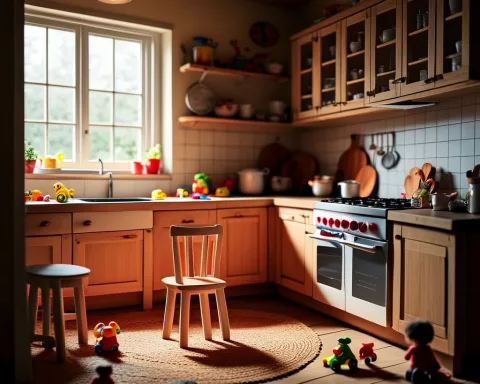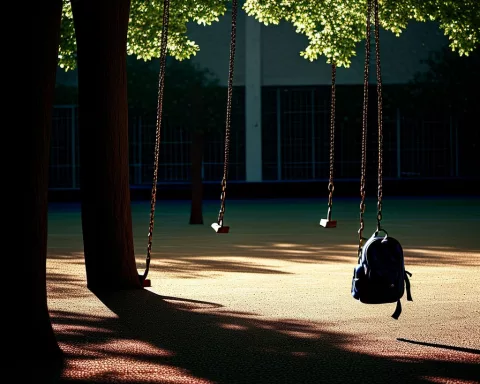The crisis of pit toilets in South African schools continues, with 141 schools still using them as of March 2025. Despite claims of progress, many children face unsafe and unhealthy conditions while the government struggles to keep its promises. Activists and communities are demanding better sanitation, highlighting the urgent need for change after tragic incidents involving children. A new app has been launched to help communities report remaining pit toilets, but the fight for safe and dignified facilities for all learners is far from over. The hope is that the government will finally take action and protect the rights of every child in the classroom.
What is the current status of pit toilets in South African schools?
As of March 2025, 141 schools still rely on pit toilets, despite the Department of Basic Education’s claim of 96% progress in eradicating these facilities. Continuous missed deadlines and regional disparities highlight ongoing challenges in ensuring safe sanitation for all learners.
Historical Failure to Fulfill Promises
In the South African education landscape, the issue of pit toilets in public schools has stubbornly persisted despite numerous declarations and missed deadlines. These outdated, unsafe, and unhygienic facilities remain a challenge for the most vulnerable learners. The Department of Basic Education, led by Minister Angie Motshekga, has once again missed its target to eradicate these hazardous toilets by March 2025, leaving 141 schools still dependent on them.
The attempt to remove pit toilets from schools has been ongoing for years. The Minimum Uniform Norms and Standards for Public School Infrastructure condemned these sanitation systems back in 2013, setting a goal for their complete removal by 2016. However, the Department failed to meet this initial deadline, leading to a series of revised targets—first 2020, then February 2023, and now March 2025. Minister Motshekga acknowledged the latest shortfall but pointed out substantial progress: 96% of the work has been completed, leaving 141 schools still waiting for safer facilities.
Despite the Department’s claims of progress, the commitment to eradicating pit toilets has repeatedly fallen short. This continuous failure not only undermines the credibility of governmental promises but also compromises the safety and dignity of learners who are forced to use these substandard facilities.
Civil Society’s Unyielding Efforts
The delay in eliminating pit toilets is more than just a bureaucratic oversight; it has tangible implications for children’s safety and dignity. Civil society organizations like Amnesty International and Equal Education have been relentless in their calls for accountability. These groups have consistently highlighted the Department’s failure to meet its deadlines as not merely a bureaucratic lapse but a violation of basic human rights.
The advocacy efforts have intensified, with each missed deadline drawing more attention and criticism. Activists argue that the Department’s inability to deliver on its promises constitutes an ongoing affront to the nation’s children. The persistent presence of these hazardous toilets in schools is a stark reminder of the government’s failure to protect its youngest citizens.
The pressure from civil society has been crucial in keeping the issue in the public eye. Their relentless advocacy underscores the importance of holding the government accountable for its commitments and ensuring that the rights of learners are upheld.
Progress and Ongoing Challenges
“Of the pit toilets identified in the SAFE Initiative’s 2018 audit, as of 31 March 2025, we have eradicated 96%. This is significant progress from seven years ago when the government identified nearly 3,372 schools across the country that relied on these dangerous structures,” said Motshekga. However, she was quick to add, “This is an achievement of scale, but it is not a victory.” The remaining 141 schools are in various stages of construction, with 90 of these expected to be completed between now and June. Yet, the issue remains: Why were these schools not addressed sooner?
The progress made so far is undeniable, but it is not enough. The lingering presence of pit toilets in 141 schools raises questions about the efficiency and effectiveness of the Department’s efforts. The delays in addressing these schools suggest a lack of urgency and prioritization that has left many learners in unsafe conditions for far too long.
The need for a new nationwide audit to identify schools missed in the 2018 survey or built after it has become evident. “While we are at the tail end of the 2018 audit, we need to initiate a new audit which will ensure that whatever was missed and built after the audit is identified and eradicated,” Motshekga emphasized. This statement highlights the ongoing nature of the problem and the necessity for continuous vigilance.
Regional Disparities and Human Cost
Parliamentary responses from BOSA leader Mmusi Maimane have revealed significant regional disparities in the presence of pit toilets. The Eastern Cape and KwaZulu-Natal are the worst-affected provinces, with 405 and 170 schools still using pit toilets, respectively. Mpumalanga and Limpopo, while also struggling, have lower numbers—40 and 37 schools. The remaining provinces have reportedly eliminated all plain pit toilets, showcasing the uneven distribution of resources and attention.
The consequences of these delays are not just statistical but deeply human. In 2014, five-year-old Michael Komape tragically drowned in a pit toilet at Mahlodumela Primary School in Limpopo. Four years later, Viwe Jali faced a similar fate in the Eastern Cape. These incidents are not isolated; they are symptomatic of a broader systemic failure. In 2021, a school principal, Lubeko Mgandela, was permanently banned from teaching after allegedly forcing a learner into a pit toilet to retrieve a cellphone. Incidents like these illustrate the dire need for immediate action.
The human cost of these delays cannot be overstated. Each tragic incident underscores the urgency of the situation and the need for the Department to take decisive and immediate action to protect learners.
Technological Initiatives and Community Involvement
In an effort to increase transparency and involve communities, the Department launched the Safe Schools App in December 2024. This app allows communities to report any remaining pit toilets, aiming to bridge the gap between governmental promises and on-the-ground realities. This initiative has the potential to empower communities to hold the government accountable, ensuring that no school remains overlooked.
The introduction of the Safe Schools App marks a significant step towards community involvement in the eradication of pit toilets. By enabling communities to report remaining pit toilets, the app aims to create a direct line of communication between the public and the government, fostering greater accountability and transparency.
The success of this initiative will depend on the responsiveness of the Department to the reports submitted through the app. If effectively implemented, the Safe Schools App could play a crucial role in accelerating the eradication of pit toilets and ensuring that all learners have access to safe and dignified sanitation facilities.
Ongoing Advocacy and National Shame
The presence of pit latrines in schools remains a national disgrace, igniting outrage and continuous advocacy from civil society groups. While the Department claims significant progress, the reality on the ground tells a different story. Hundreds of learners still face unsafe and degrading conditions. With a new audit on the horizon and a revised target set for July 2025, the public and advocacy groups remain vigilant, hoping this time the Department will follow through on its promises.
The persistent issue of pit toilets in South African schools reflects broader societal challenges. It highlights the disparities in resource allocation, the inefficiencies in governmental planning, and the ongoing struggle for basic human rights in the education sector. The situation serves as a stark reminder of the work that remains in ensuring all children have access to safe and dignified learning environments.
Moving Forward
As we look ahead, the hope is that this time, the Department of Basic Education will honor its commitments. The eradication of pit toilets is not just a logistical challenge but a moral imperative. The children of South Africa deserve better, and it is incumbent upon all stakeholders to ensure that this time, the promise of safe sanitation becomes a reality.
The road ahead will require sustained effort, accountability, and a genuine commitment to the well-being of learners. The promise to eradicate pit toilets must be fulfilled, not just for the sake of meeting a target, but to ensure that every child can learn in a safe and dignified environment. The future of South Africa’s education system depends on it, and the nation’s children deserve nothing less.
FAQ on the Crisis of Pit Toilets in South African Schools
What is the current status of pit toilets in South African schools?
As of March 2025, there are still 141 schools in South Africa relying on pit toilets, despite claims from the Department of Basic Education that they have achieved 96% progress in eradicating these facilities. Continuous missed deadlines and regional disparities highlight the ongoing challenges in ensuring safe sanitation for all learners.
Why have previous deadlines for eradicating pit toilets been missed?
The Department of Basic Education has repeatedly missed deadlines for eradicating pit toilets, initially aiming for complete removal by 2016. Subsequent targets were set for 2020, February 2023, and now March 2025. These delays have been attributed to various challenges in implementation and regional disparities, particularly affecting vulnerable communities.
What are the consequences of pit toilets in schools?
The presence of pit toilets poses significant safety and health risks for learners. Incidents like the tragic drowning of children in pit toilets underscore the severe implications of their continued existence. Additionally, the psychological impact and degradation associated with using these facilities violate the dignity and basic human rights of students.
How are civil society organizations addressing the issue?
Organizations such as Amnesty International and Equal Education have been actively advocating for accountability from the government regarding the pit toilet crisis. They emphasize that the failure to meet deadlines represents a violation of children’s rights and have mobilized public pressure to demand swift action from the authorities.
What initiatives are being taken to improve the situation?
In December 2024, the Department of Basic Education launched the Safe Schools App, allowing communities to report remaining pit toilets directly. This initiative aims to enhance transparency and accountability, empowering citizens to participate in the monitoring and improvement of sanitation facilities in their schools.
What are the next steps for addressing the pit toilet crisis?
Looking ahead, the Department of Basic Education has pledged to initiate a new nationwide audit to identify any schools missed in previous assessments. With a revised target set for July 2025, the focus remains on ensuring that all learners have access to safe and dignified sanitation facilities. The commitment of all stakeholders is crucial in fulfilling this promise and safeguarding the rights of every child in South Africa.












